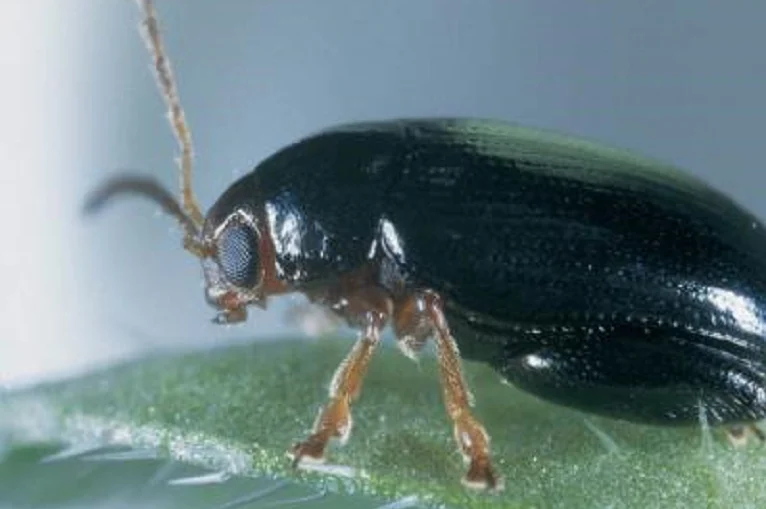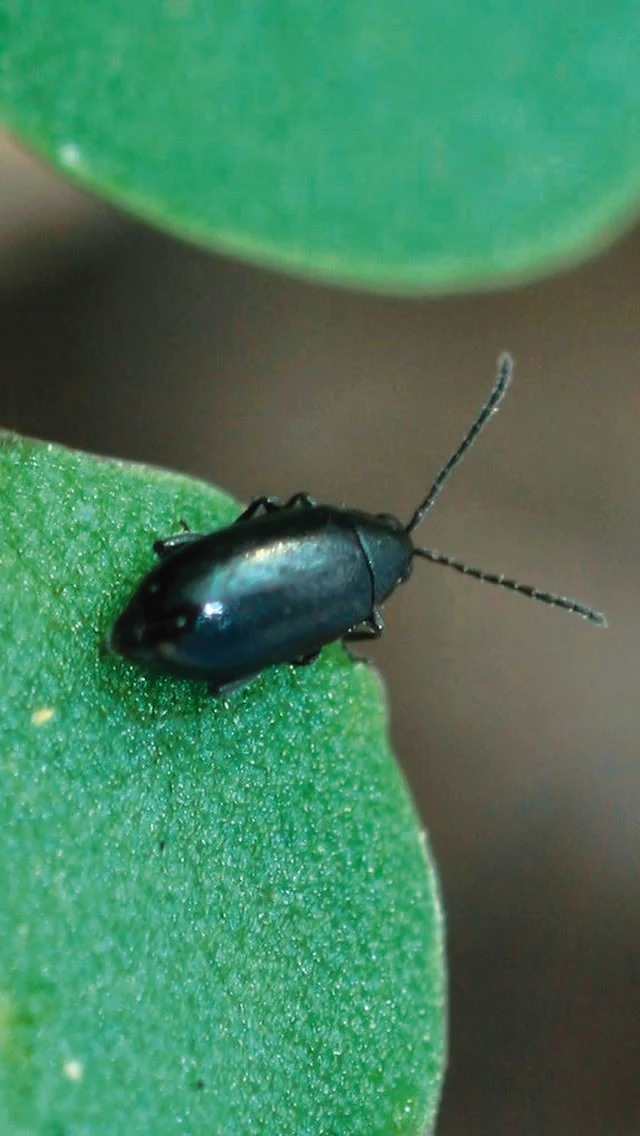
Flea Beetles
Phyllotreta spp.
Identification
There are many different species of flea beetles which feed on brassicas and these range in colour from shiny metallic black (turnip flea beetles, P. cruciferae, P. nigripes) to black with yellow stripes along each wing case (large striped flea beetle, P. nemorum). The adults are 2-3 mm long and the larvae are white with a brown head and 3 pairs of legs and are 2.5 mm long. The adults have well developed hind legs which allow them to jump many times their own height when disturbed. They are smaller than CSFB and are most active in warm dry conditions.
Symptoms
Most damage is caused by the adults feeding on the cotyledons, stems and young leaves leaving characteristic pits and small holes (shot-holing). The larvae feed in ‘mines’ within the plant tissue and in some species the larvae also feed on the plant roots.
Life-cycle
In April and May the adults emerge from their overwintering sites and in favourable conditions fly distances of up to 1 kilometre in search of suitable plants to start feeding. Eggs are laid alongside host plants and after 2-3 weeks the larvae emerge and feed on the leaves and roots. When fully fed the larvae pupate in the soil and 6-8 weeks later the adults emerge and search for sources of food. In late autumn the adults hibernate in tussocky grass, hedges or other sheltered locations. There is only 1 generation per year.
Importance
Flea beetles can severely check growth and stunt young plants and where pest pressure is high feeding can result in plant loss. Late sown spring crops are most at risk from attack by adult flea beetles.
Threshold
In hot dry conditions large numbers of invading adults can put at risk the establishment of crops of spring sown oilseed rape and other cultivated brassica crops unless appropriate control measures are taken.

Adult flea beetle

Flea beetles and leaf damage

Large striped flea beetles and feeding damage


